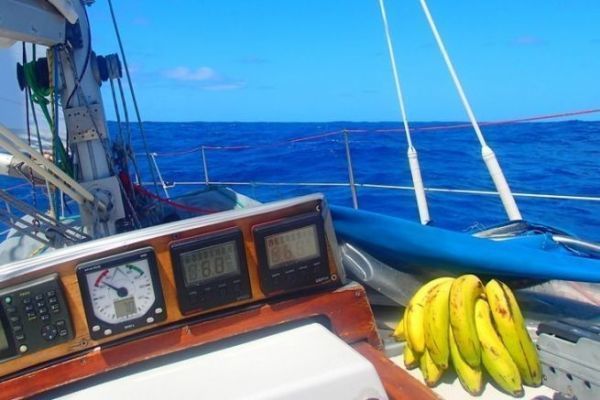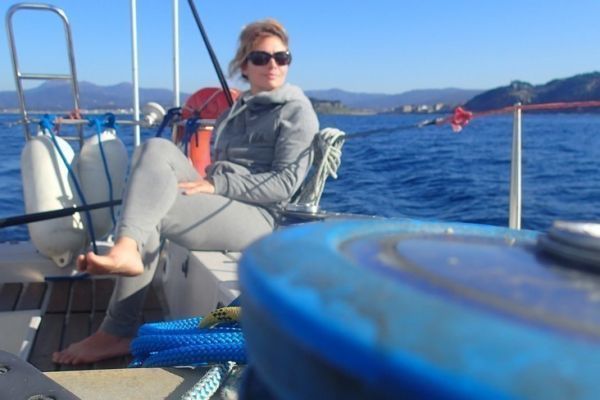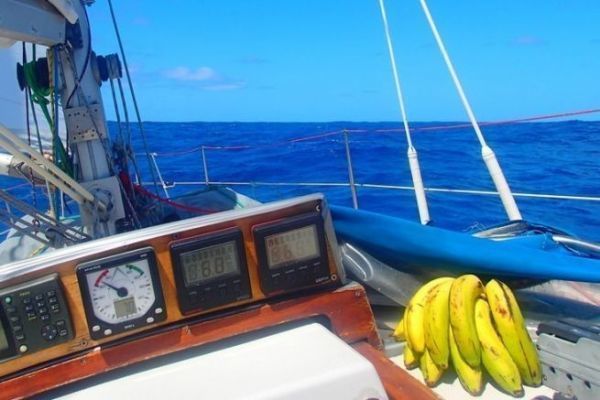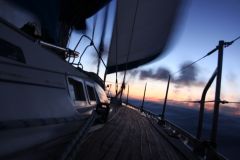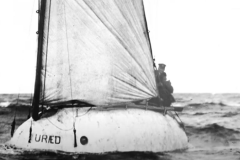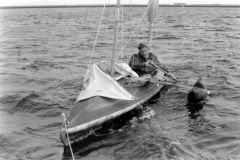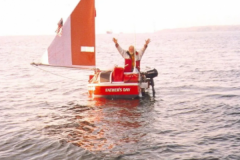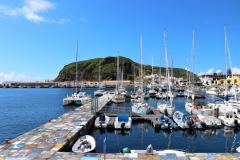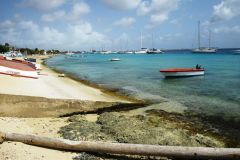We're planning a transatlantic race from the Canaries to the West Indies via Cape Verde. Our sailboat is a Melody, which unfortunately does not have a working autopilot (as described here) . So it's imperative that we find team members.
Casting, live from the pontoons
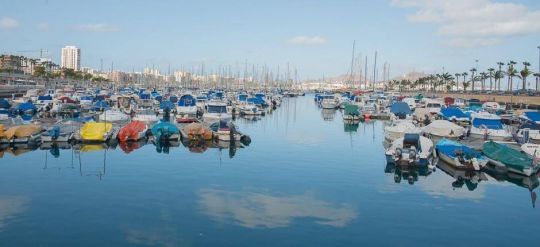
Moored at the pontoon of the port of Las Palmas in Gran Canaria, a young couple introduce themselves to us: they want to cross the Atlantic in a sailboat out of ecological conviction, and wish to travel to Latin America to then cross the continent on horseback, in the same frame of mind. Smiling, friendly and motivated, we take their contact details and give ourselves time to think.
We also meet other hitchhikers: bundle on the shoulder, straw hat on the head, guitar under the arm. They've never sailed before, but say they're " cool and nice "They know how to cook pasta like never before, and offer to play music during their shift.
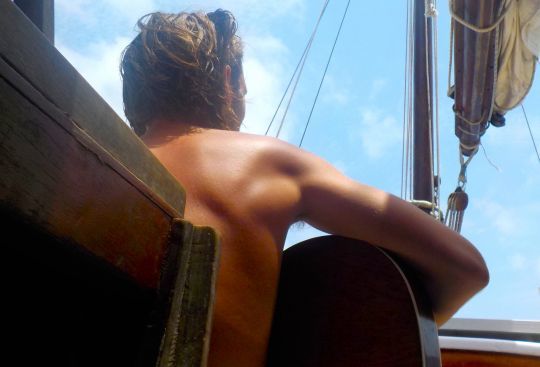
Others leave for the "other side" to experiment, to reinvent themselves, without knowing what they will do in the West Indies, just because " the company in Europe, it's getting too lame "...
We chose the first couple we met. They are simply and efficiently equipped, brimming with great values, and yes, they have already sailed several days in the Mediterranean.
With transatlantic travel and the dream of a low-budget trip in mind, when it came to the bulk of our provisions, we opted for rice, fresh and functional.
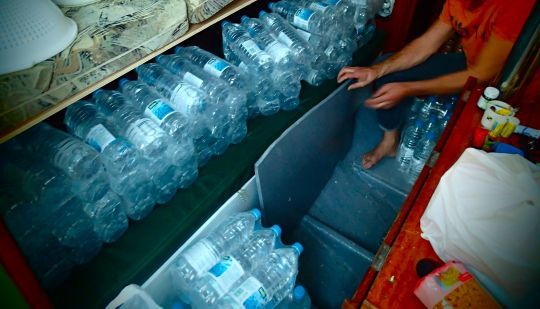
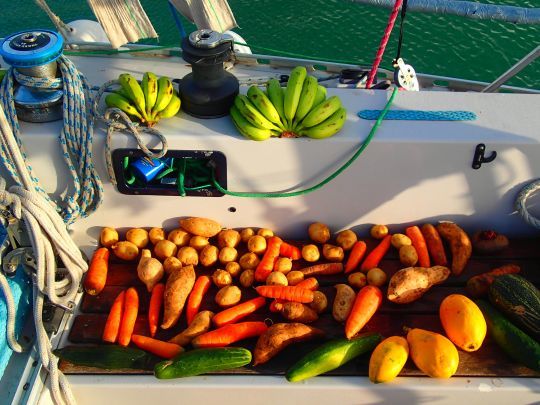
However, our hitchhikers are more or less vegetarians and only eat organic food. Eating organic is not incompatible with sailing. But while we're at it, we'd rather not have to cook several courses a day.
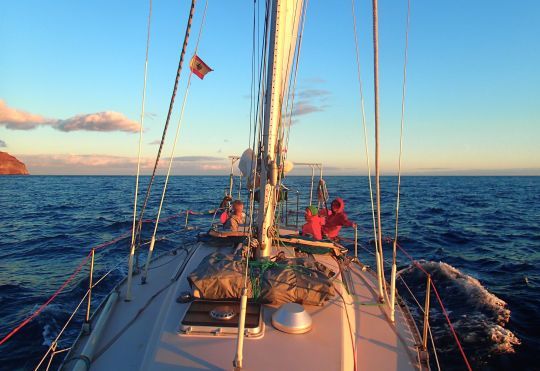
As soon as we set sail for the first time between Las Palmas and the port of La Vuelta on the island of La Gomera, our hitchhikers' stomachs began to show signs of resistance. The (organic) meals were quickly returned to the sea.
We'll need some time to moor up, but there's no alternative to that during our sail from Hierro to the Cape Verde archipelago, a total of around 7 days at sea.
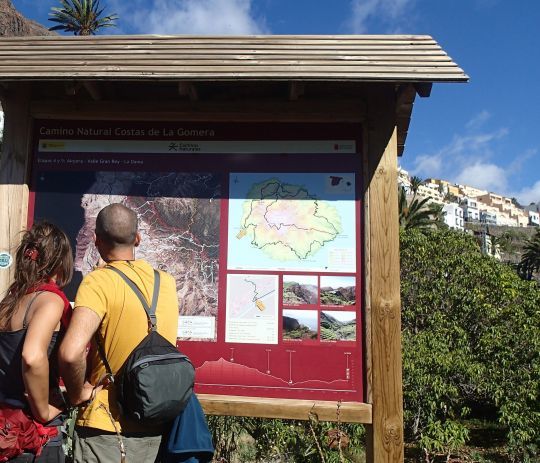
Unfortunately for Jules, the young man, the seasickness persists. As for Marie, she's not at ease at the helm in rough seas, and is still a little "muddy".
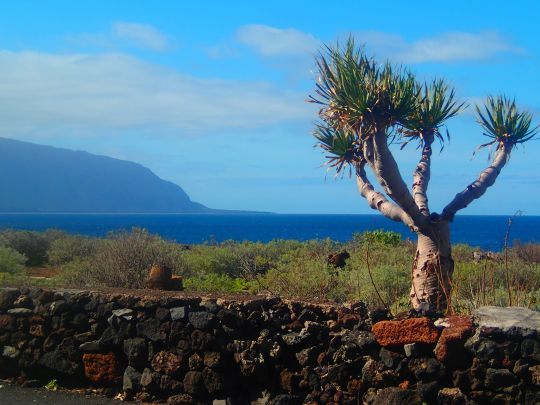
In Hierro, we take the opportunity to explore the island on our own, before coming back on board in a few days. Marie and Jules will be seasick almost non-stop until we arrive in Cape Verde.
To continue the adventure or not?
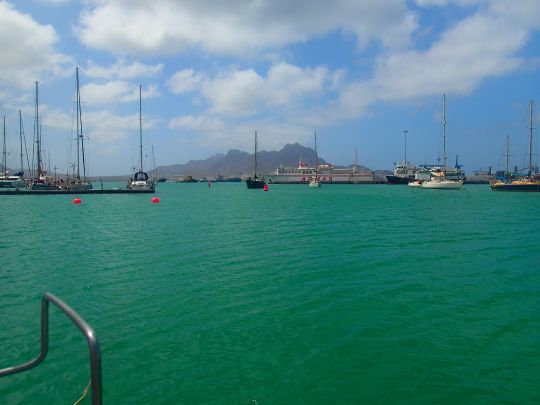
Once we arrived in the port of Mindelo, on the island of Sao Vicente, the question of continuing the adventure together seriously arose. It's a dilemma for the stopper boats to find reliable boarding on a catamaran (more stable) in a short space of time, and it's also complicated for us to find other crew members without getting to know each other a little first. After all, another month of sailing and we'll be there. So we're keeping our couple on board.
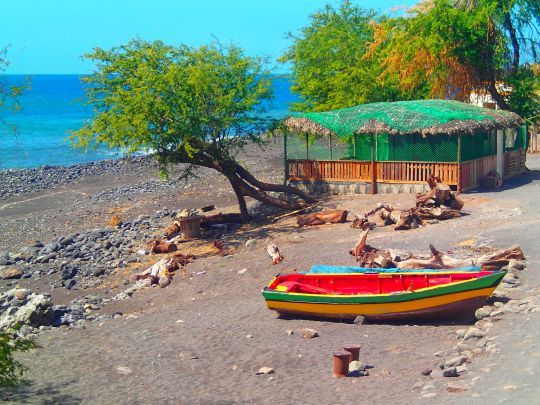
Shortly before we set off, we bolster the water in the port of Mindelo on the island of Sao Vicente, heading for the Tarrafal anchorage on the south-western side of the island of San Antao. Three days later, we're off for the big jump, heading due west towards the setting sun.
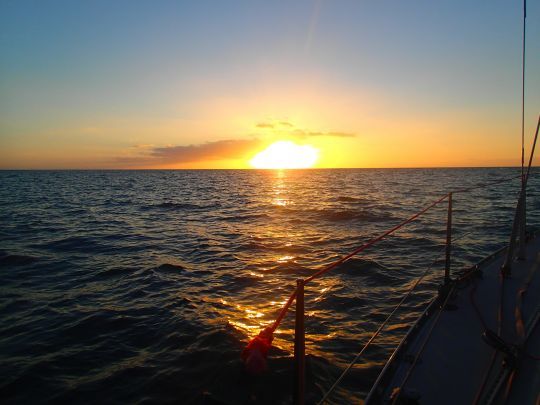
The very next day, we start using bunkered water for coffee and cooking. In addition to his seasickness, Jules contracted a fairly severe case of turista. We're all affected to a greater or lesser extent, but Jules finds himself getting worse, weaker and dehydrated. He categorically refuses to be treated with anything other than his essential oils, and we are forced to wait until he is at his worst before managing, 7 days later, to convince him to take allopathic medication.
In the middle of the ocean, with no contact with land, the trade winds can quickly turn into a hostile environment. Survival and common sense must come first, for the sake of the whole crew and the smooth running of the race.
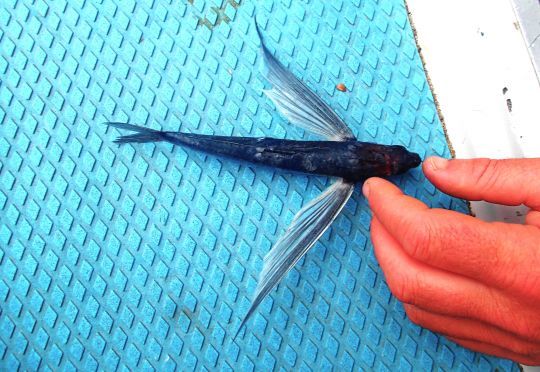
Jules is recovering slowly and painfully. Marie is taking good care of him, sharing her time with the limited quarter-bar we've allocated her.
A week later, the weather has warmed up considerably and the atmosphere is full of humidity. The first hawksbills and sea mammals are making their appearance, and we're still marvelling at every rainbow that appears after a squall.
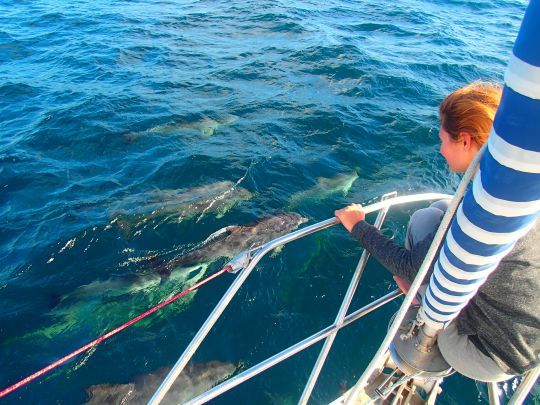
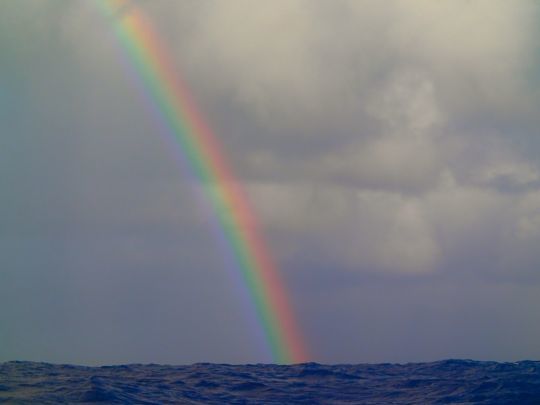
Trolling is an integral part of a transatlantic cruise, adding fresh protein to the menu. Not to mention the satisfaction of cooking and eating your valiant catch. The capture of our first dolphinfish was a real feast for the captain and myself.
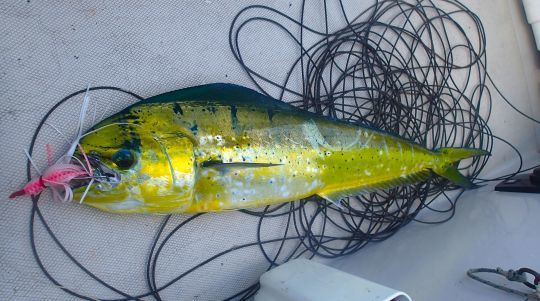
As the captain butchers his prey and explains how it will be cooked, Jules winks. Marie, for her part, seems torn between faith in her diet and her omnivorous instincts.
A half-hearted arrival
While the skipper and I revel in what the daily routine of this transatlantic race offers us as an intense and unique moment in life, the impatience to arrive and the weariness of our two boat stoppers inexorably alter the experience somewhat.
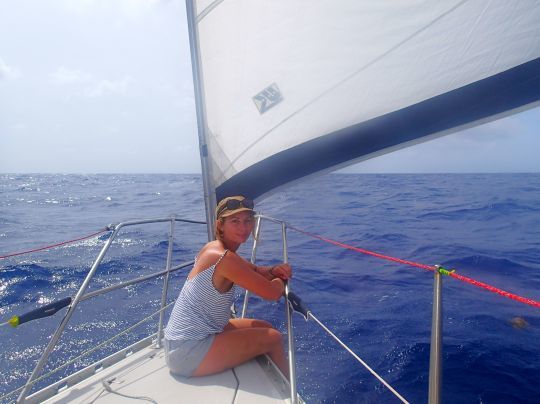
After a timid trade wind at the start, followed by a period of stormy squalls, our last few days have proved to be quite testing, with a big swell and a good 25 knots of wind.
Seventeen days after leaving Cape Verde, Marie and I take our night shift. Suddenly, a warm, earthy, spicy scent fills our nostrils. If the ocean has no smell, the smell of arrival after a crossing of several days is absolutely delicious.
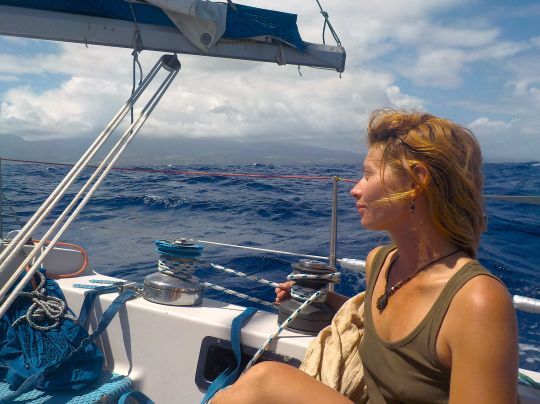
At dawn, Désirade is in sight, followed by Marie Galante and Guadeloupe. Les Saintes is our chosen destination for landing.
Once everyone's joy has exploded in loud declamations of "cheers", everyone curls up into their shells. The second emotional effect inexorably draws us back into the unfolding of this atypical slice of life.
The four of us have crossed the Atlantic together. Every mile was crossed with the strength of our biceps, and the horizon was swept relentlessly thousands of times by our dreamy eyes.
The anchor sinks in 5 meters of water, a short distance between the shore and the emblematic Sugar Loaf rock.
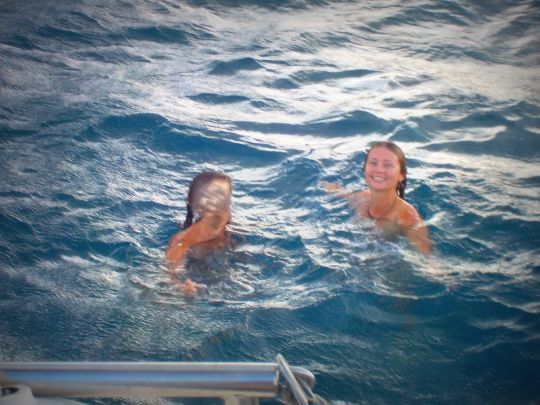
I take off my clothes and jump into the water under the captain's amused gaze. Marie hesitates for a second, then joins in with a laugh: the joy of my first swim in the West Indies puts a positive finishing touch to this crossing. Jules observes the scene with a smile.
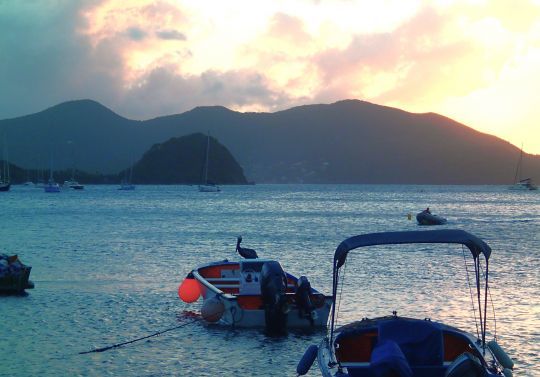
That evening, we thought the few tensions we'd built up had dissipated as we shared our first smoked chicken. In fact, the very next day, our two hitchhikers quickly left the ship, never to be heard from again.
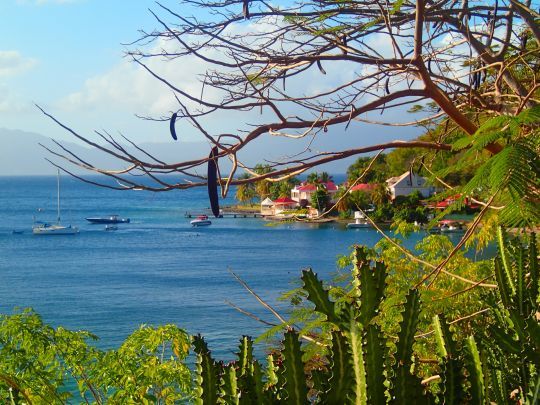
We took them across the Atlantic, as they wished and in complete safety. Although the sailing was always calm and respectful, the lack of enthusiasm, conviviality and a little recognition left us with a slightly bitter taste.
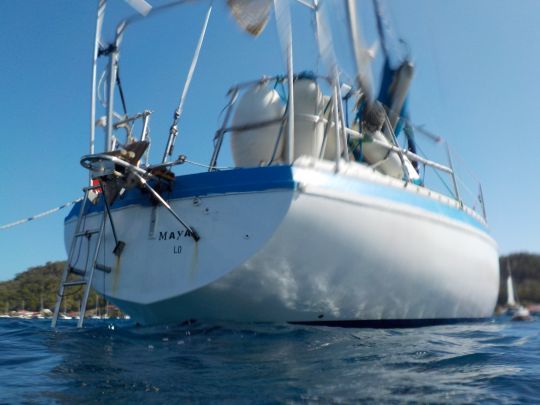
Fortunately, not all co-navigations turn out this way, and some of the people we take on board later become true friends.
